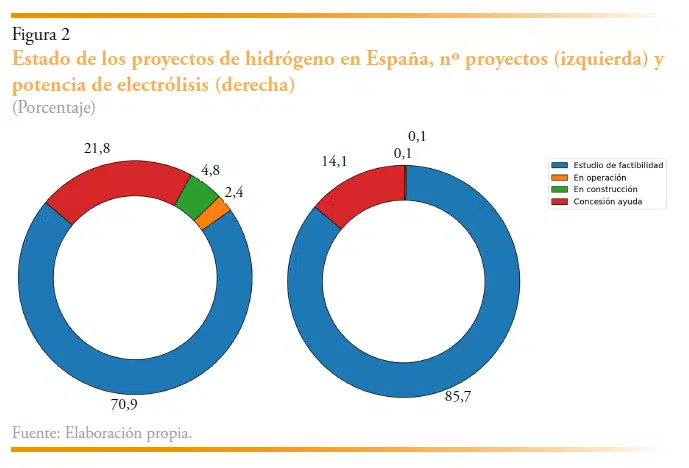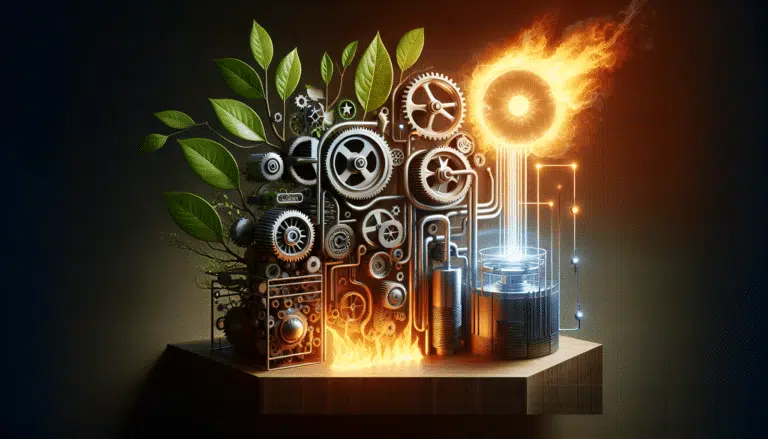Este motor no requiere combustible ni se ubica en el compartimento del motor: ¿será este el final del hidrógeno?

In a context where sustainability and innovation are fundamental, a motor that does not use fuel emerges, and it is also not located in the traditional compartment of vehicles. This technological advance challenges conventional notions about mobility and raises concerns about the future of alternatives such as hydrogen. As the world moves toward decarbonization, it is crucial to reflect on how these new technologies could revolutionize the automotive industry and transform our way of moving.
In the quest for more sustainable and clean solutions for mobility, a new engine has arrived to revolutionize the automotive landscape. Unlike conventional engines that rely on fossil fuels or hydrogen, this innovative engine does not require fuel and is located in an unexpected space, raising significant questions about the future of energy in transportation and the possible obsolescence of the current hydrogen-based system.
A paradigm shift in automotive design
The automotive industry is at a crucial moment, marked by the need for decarbonization and the search for more efficient and less harmful alternatives for the environment. With the development of this engine, which does not require fuel and is not placed under the hood, a new era in sustainable mobility is opened. This advance could challenge the predominance of technologies such as hydrogen and internal combustion engines.
Innovations that provide new possibilities
In recent years, there has been a significant increase in investment and the development of alternative technologies for vehicles. The arrival of this innovative engine stands out among the multiple available solutions, driving research toward more sustainable fuels and propulsion systems. This transformation has the potential to reduce not only the use of fossil fuels but also the emissions of pollutants that affect our atmosphere.
A unique propulsion system
This engine, located in the wheels of the vehicle, offers a completely different architecture compared to traditional designs. By integrating the motor directly into each wheel, the inconveniences associated with energy distribution are eliminated, leading to improved energy efficiency. Each wheel has its own motor, allowing for independent control and optimization in handling.
Benefits for the environment and energy efficiency
By not relying on fossil fuels or hydrogen, this engine has the potential to minimize the environmental footprint of transportation. The ability to manage each wheel independently not only increases safety but also enhances efficiency in energy consumption. In an ideal scenario, adopting this type of technology could lead to a drastic reduction in air pollution and the use of non-renewable resources.
The future of mobility: goodbye to hydrogen?
As we move towards these new propulsion models, the question remains about the future of hydrogen in the automotive landscape. Although this resource has been promoted as a viable alternative to fossil fuels, the emergence of engines that do not require fuel may signal its decline. The efficiency and sustainability of electric systems and other types of motors in development could accelerate the transition to a more sustainable mobility.
Other innovations in the sector
In addition to this innovative engine, other developments in clean energy and propulsion technologies continue to capture the attention of the industry. For example, solutions that utilize electricity generated from renewable sources or alternative fuels that do not impact the environment. These alternatives are expected to complement and, in some cases, surpass the hydrogen model.
The direction we are heading
The path to a more responsible future in energy consumption and transportation seems to depend largely on the evolution of these disruptive technologies. The combination of sustainability, efficiency, and emissions reduction will be fundamental in generating real change in the automotive industry, and this engine could be the first step toward that transformation.
Exploring more about clean energies
To continue delving into the advancements of this engine and other types of innovations in the automotive sector, various additional sources can be consulted. For example, details about the effective use of resources in transportation can be found in this article. It is also interesting to know the potential of motors for 4×4 vehicles in relation to surpassing conventional models, available at this link, among others.
Reflections on the future of sustainable mobility
The emergence of a motor that does not require fuel and is integrated directly into the wheels of a vehicle marks a significant milestone in the search for cleaner and more efficient transportation options. This innovation not only promises to transform the way cars are designed and operated but also raises serious questions about the viability of traditional alternatives, such as hydrogen, in the future mobility landscape.
As the automotive industry advances toward decarbonization, the emergence of these types of engines could redefine what we consider “sustainable.” Through improved energy efficiency and a notable reduction in dependence on fossil fuels, a future is envisioned where motorized transport can coexist in harmony with the environment.
The architecture of these integrated engines provides gains in performance, range, and safety. By managing each wheel independently, both maneuverability and driving comfort are optimized, challenging the traditional conception of how vehicles should be. Moreover, advancements in battery technologies and alternative systems solidify the path toward electric mobility as the norm, relegating solutions that depend on fuels like hydrogen to a secondary role.
Thus, the question of whether this new engine will mark the end of hydrogen is not just about the future of a particular technology but about the kind of innovation that can occur when the boundaries of conventional thinking in engineering and sustainability are pushed. This is an exciting era of transformation, where current challenges can be addressed with creativity and a futuristic vision.






